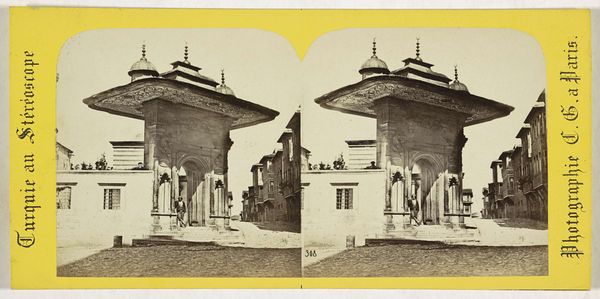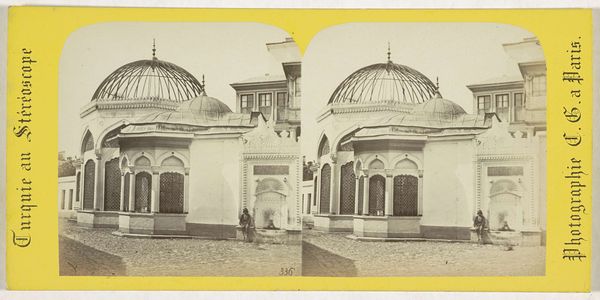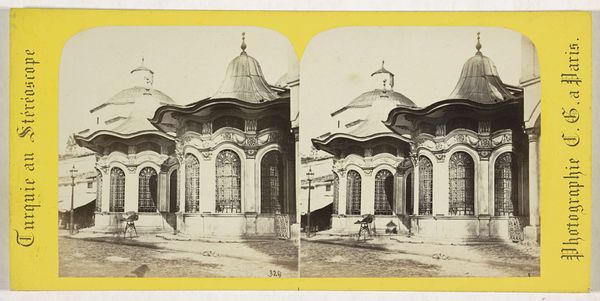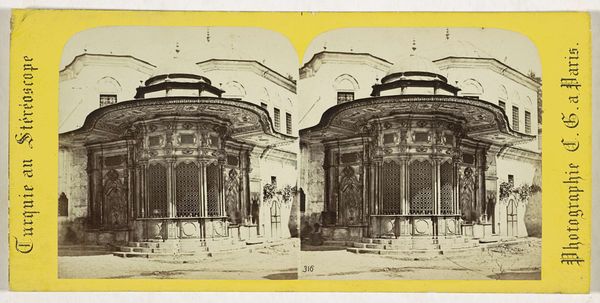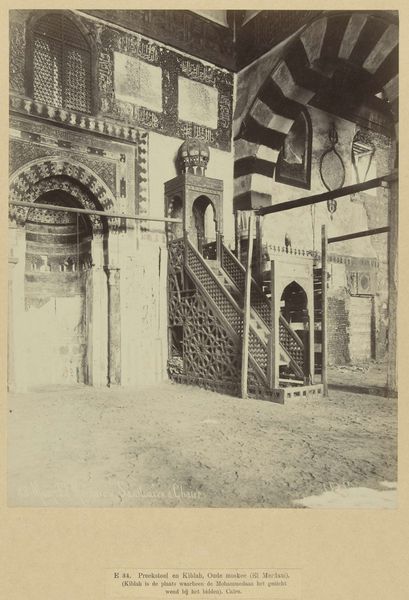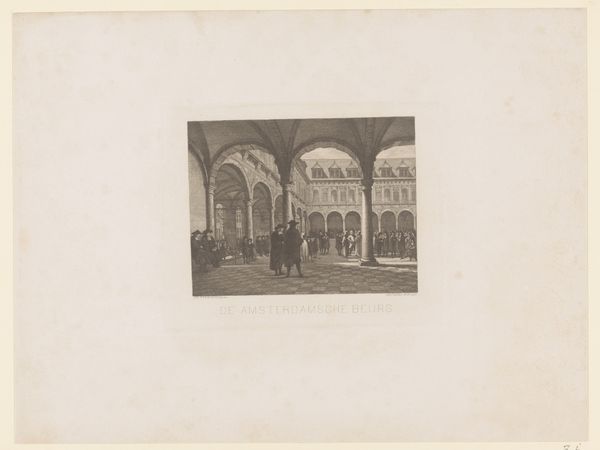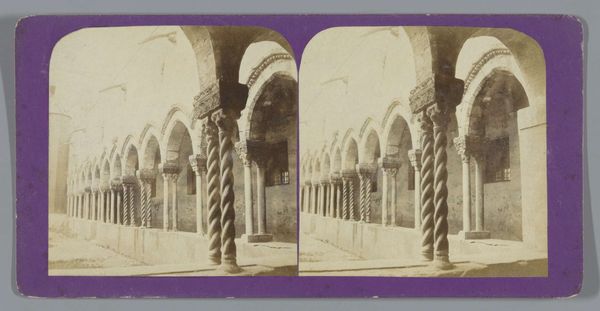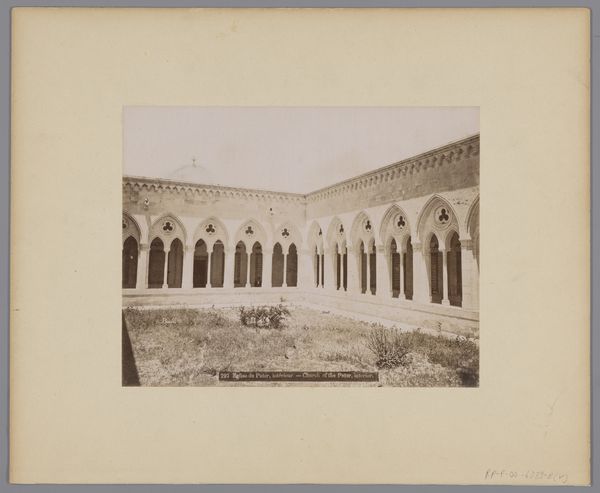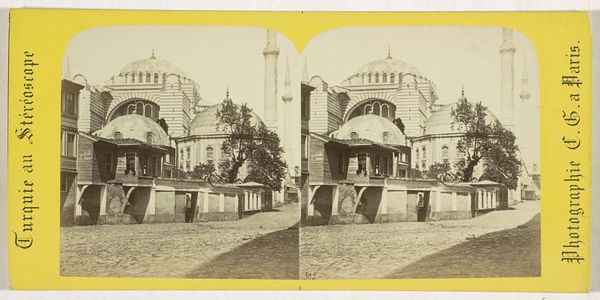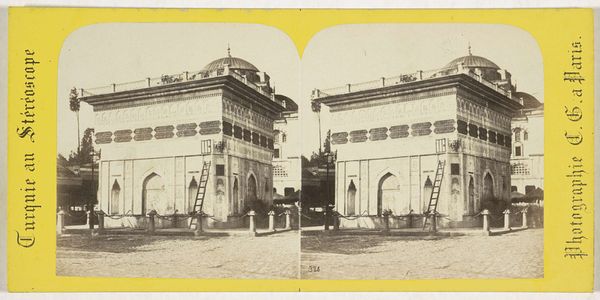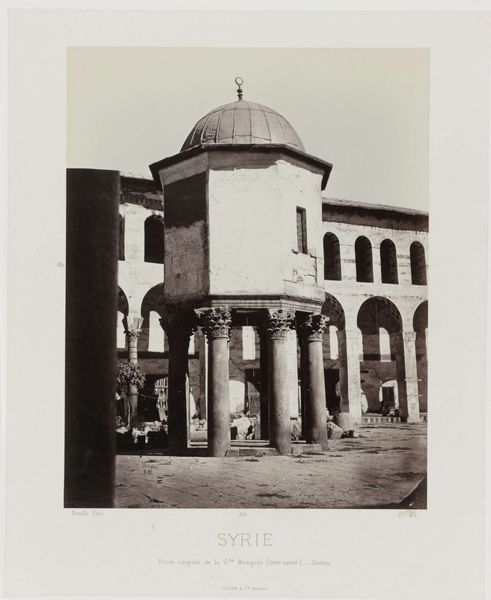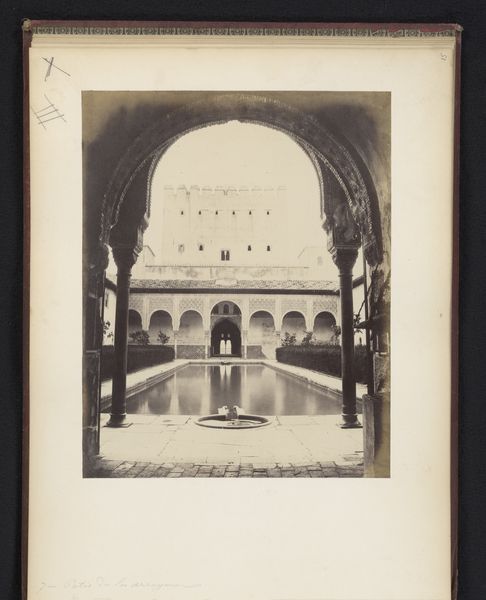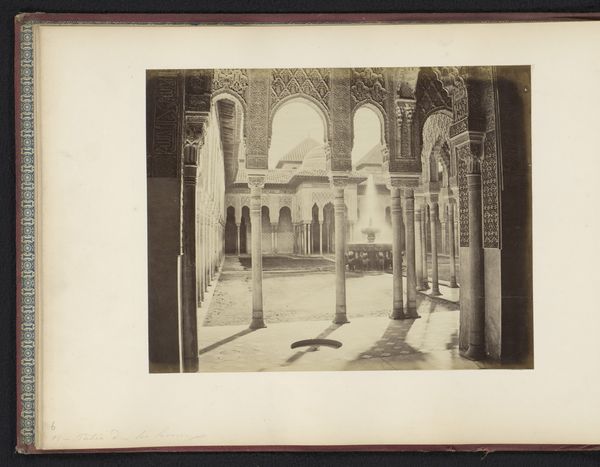
photography, albumen-print
#
landscape
#
photography
#
orientalism
#
islamic-art
#
history-painting
#
albumen-print
Dimensions: height 84 mm, width 174 mm
Copyright: Rijks Museum: Open Domain
Curator: Let’s consider this albumen print from sometime between 1861 and 1870. It’s entitled "Sjadirvan op de binnenplaats van de Sultan Ahmetmoskee, Istanboel," attributed to Charles Gaudin. Editor: It strikes me immediately as so symmetrical and still. The composition, with that fountain centered, creates a palpable sense of balance, almost like a mirror image, duplicated to mimic human vision, and its tonality enhances its architectural majesty. Curator: Indeed. What interests me most here is understanding Gaudin's role within the context of Orientalism. Photography, in its relative newness, offered Europeans a seemingly objective way to document and, in a way, possess the "exotic" East. Editor: Objective perhaps in its mechanical nature, but hardly devoid of subjective choices! Note how Gaudin uses light and shadow to emphasize certain details, creating depth and drawing our eye precisely where he wants it. The structural repetitions, the arches, the columns—it all works to guide the viewer. Curator: Precisely! The deliberate composition speaks volumes. The inclusion of a lone figure beside the fountain reinforces the Western gaze—placing an anonymous “local” within this architectural tableau. This representation served to solidify Europe’s perceived dominance and cultural superiority at the time. What do you think about the historical role of photography when it interacts with different cultures? Editor: I think what's brilliant, from a semiotic viewpoint, is how architecture and the figure combine into something iconic. The mosque, a signifier of Islam, is not merely recorded but curated. Curator: Gaudin’s work contributed to a larger narrative. Consider that this photograph, viewed through a stereoscope, aimed to provide a heightened sense of reality. This adds layers to understanding how photographic technologies were deployed to create compelling and often biased narratives about the "Other." Editor: Fair enough, I remain deeply drawn to the clarity of the lines, the texture of the stone revealed by Gaudin's choices of lighting—the formalism here really sings! Curator: And I believe considering the social dynamics gives his technique even greater weight and allows us to decode its larger implications for contemporary understandings of power and representation. Editor: A fitting synthesis. Viewing historical context, and engaging with form creates a broader experience of art.
Comments
No comments
Be the first to comment and join the conversation on the ultimate creative platform.
